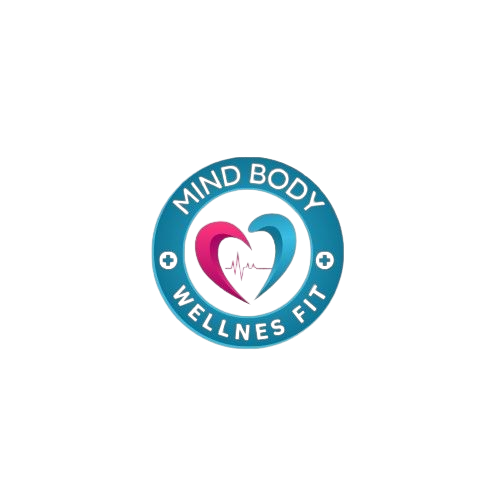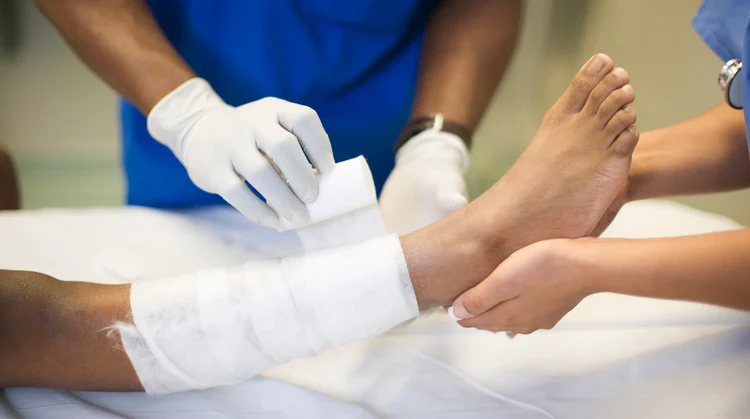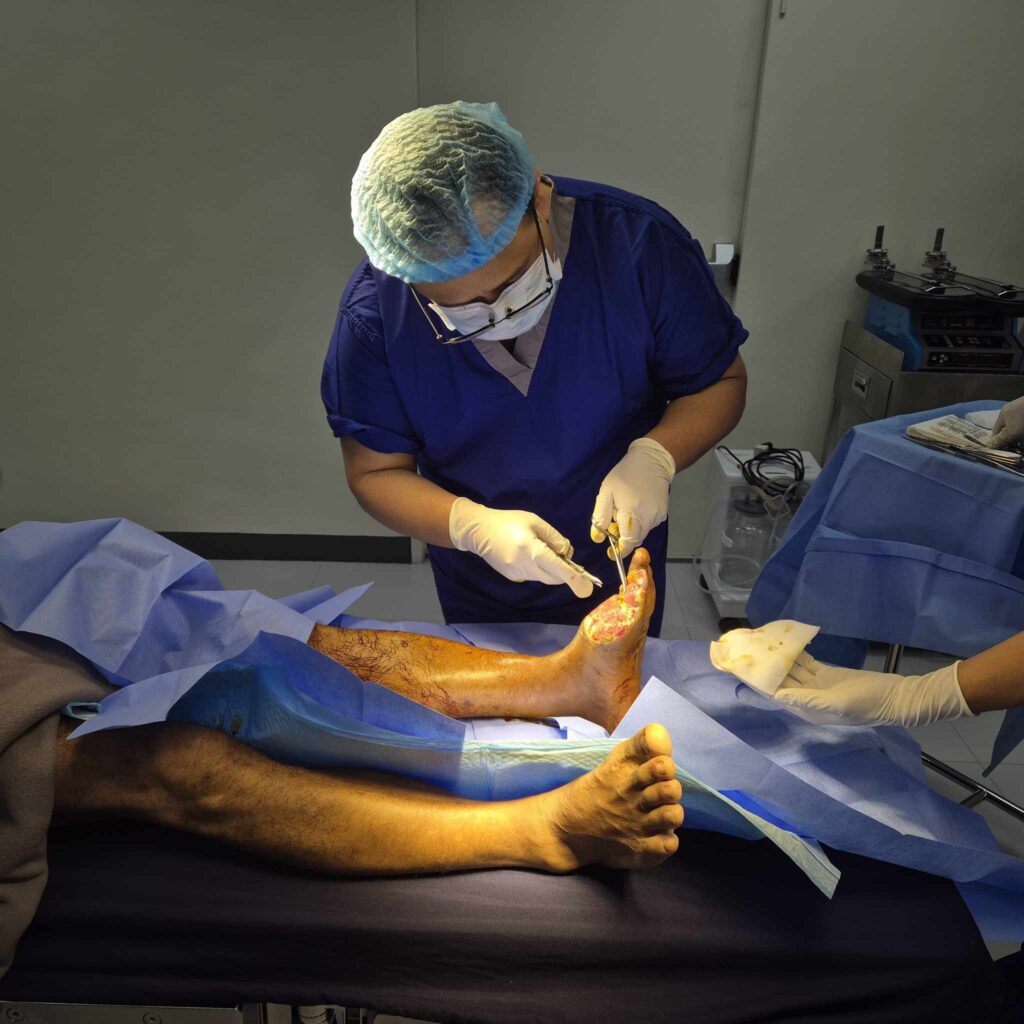Understanding Wound Treatment Centers
A wound treatment center is a specialized healthcare facility dedicated to the assessment, management, and healing of various types of wounds. Unlike general medical clinics, these centers focus on both chronic and complex wounds, including diabetic ulcers, pressure injuries, surgical wounds, and trauma-related wounds. They employ a multidisciplinary team of experts, such as wound care specialists, nurses, physical therapists, nutritionists, and sometimes vascular surgeons. Each team member plays a crucial role in developing personalized treatment plans to ensure optimal healing. Wound treatment centers often integrate advanced diagnostic tools, innovative therapies, and patient-centered approaches that are not available in conventional healthcare settings. Patients benefit from a structured program that monitors progress closely, reduces the risk of infection, and addresses underlying health conditions contributing to slow healing. With specialized care, patients can experience faster recovery times, improved quality of life, and minimized complications.
Advanced Treatment Approaches
Wound treatment centers utilize a variety of advanced techniques to promote efficient healing. Debridement, which involves removing dead or infected tissue, can be performed surgically, enzymatically, mechanically, or through autolytic processes. Negative pressure wound therapy (NPWT) is another widely used approach that stimulates tissue growth and reduces fluid accumulation, speeding up recovery. Hyperbaric oxygen therapy enhances healing by increasing oxygen supply to damaged tissues, which is particularly effective for chronic and diabetic wounds. Modern dressing materials also play a critical role in wound care. These include hydrocolloid, foam, alginate, and antimicrobial dressings, each designed to manage moisture, prevent infection, and protect the wound environment. Pain management is also a priority, with strategies tailored to the patient’s condition, including local anesthesia during procedures or specialized wound care analgesics. Combining these treatments ensures that wounds are not only treated efficiently but also with patient comfort and safety in mind.
Diagnostic and Assessment Tools
A key aspect of a wound treatment center is its ability to provide thorough assessment and monitoring. Initial wound evaluation focuses on determining the wound’s size, depth, tissue type, and exudate characteristics. Imaging techniques such as ultrasound, MRI, or CT scans may be employed for complex or deep wounds, allowing precise treatment planning. Laboratory tests help identify underlying issues like infection, diabetes, or vascular insufficiencies that can impede healing. Regular monitoring ensures treatment effectiveness and allows for timely adjustments to the plan. Advanced centers may also use digital photography, wound measurement software, and electronic health records to track progress and document changes over time. Proper diagnostic procedures not only support faster healing but also reduce the risk of complications like infection or chronic deterioration. By prioritizing comprehensive assessment, wound treatment centers can deliver highly targeted therapies tailored to each patient’s unique needs.
Patient-Centered Care and Recovery
Recovery in a wound treatment center extends beyond clinical interventions. Personalized treatment plans are developed to address the specific type of wound, the patient’s overall health, and lifestyle factors. Nutrition plays a significant role, as adequate protein, vitamins, and minerals support tissue repair and immune function. Physical therapy may be incorporated to improve mobility and circulation, especially in patients with pressure injuries or post-surgical wounds. Patient education is also essential, teaching proper wound care techniques, infection prevention, and lifestyle adjustments to prevent recurrence. These programs often include guidance for home care, ensuring continuity of treatment outside the clinic. Emotional support and reassurance from the care team help patients adhere to treatment plans and maintain a positive outlook during recovery. Ultimately, patient-centered care empowers individuals to actively participate in their healing process while reducing the risk of prolonged complications.
Technology and Innovation in Wound Care
Innovation is a hallmark of specialized wound treatment centers. Telemedicine allows patients with chronic wounds to receive expert guidance without frequent clinic visits, making care more accessible and convenient. Smart wound dressings embedded with sensors can detect early signs of infection or moisture imbalance, enabling timely intervention. Artificial intelligence is increasingly used to analyze wound images, predict healing outcomes, and optimize treatment plans based on real-time data. Emerging regenerative medicine techniques, including growth factor therapy and bioengineered skin substitutes, offer promising results for wounds that are difficult to heal naturally. These technologies work together to create a healing environment that is efficient, precise, and personalized. Patients benefit from faster recovery times, fewer complications, and improved overall outcomes. By staying at the forefront of medical innovation, wound treatment centers offer solutions that extend beyond traditional methods of care.
Choosing the Right Wound Treatment Center
Selecting the right wound treatment center is crucial for effective healing. Key factors include the expertise of medical staff, availability of advanced therapies, reputation, patient reviews, and insurance coverage. A multidisciplinary approach ensures that patients receive comprehensive care for both the wound and any underlying conditions. Important questions to ask a center may include:
- What types of wounds do you specialize in?
- Which treatment technologies and therapies are available on-site?
- How is patient progress monitored and documented?
- Is nutrition and lifestyle counseling included in the care plan?
- Are follow-up visits and home care support provided?
A center that prioritizes personalized care, advanced technology, and continuous monitoring is best equipped to support patients through the healing process. Making an informed decision ensures that patients receive timely, effective treatment with minimal risk of complications.
Frequently Asked Questions (FAQ)
- What types of wounds are best treated at a specialized wound center?
Wound treatment centers are ideal for chronic, non-healing, or complex wounds, including diabetic ulcers, pressure sores, surgical wounds, and trauma-related injuries. - How long does it usually take for chronic wounds to heal?
Healing time varies based on wound severity, underlying health conditions, and treatment adherence. Some wounds may heal in a few weeks, while others require several months. - Are wound treatment centers covered by insurance?
Many centers accept insurance, but coverage depends on the policy, wound type, and required procedures. It’s recommended to verify with both the provider and insurance company. - Can home care be combined with professional treatment?
Yes, home care often complements clinic-based treatment. Patients are provided with guidance on wound dressing, hygiene, and monitoring between visits. - What lifestyle changes support wound healing?
Adequate nutrition, proper hydration, blood sugar control, regular movement, and avoiding smoking are essential for faster healing and reduced complications.
Takeaway
Wound treatment centers provide specialized care that goes beyond standard medical treatment. They combine advanced therapies, state-of-the-art technology, and patient-centered strategies to address complex wounds effectively. By prioritizing assessment, personalized care, and continuous monitoring, these centers help patients achieve faster healing and improved overall well-being. Choosing the right center ensures access to expert guidance, innovative solutions, and comprehensive support, making it a crucial resource for anyone dealing with chronic or difficult-to-heal wounds.






